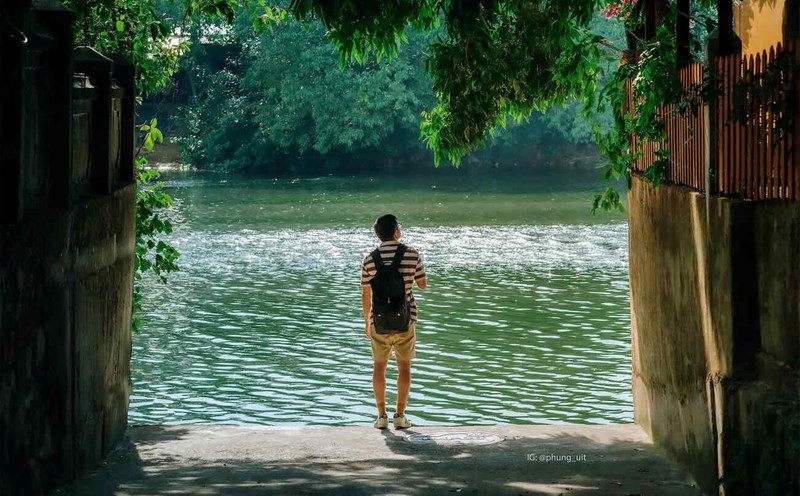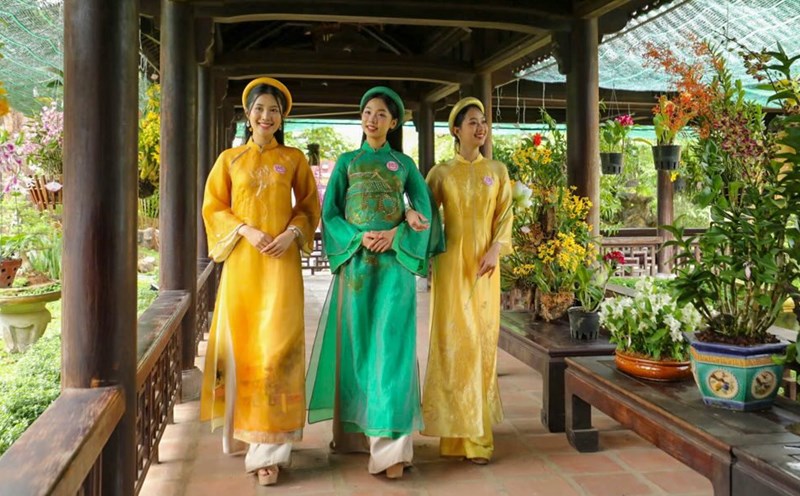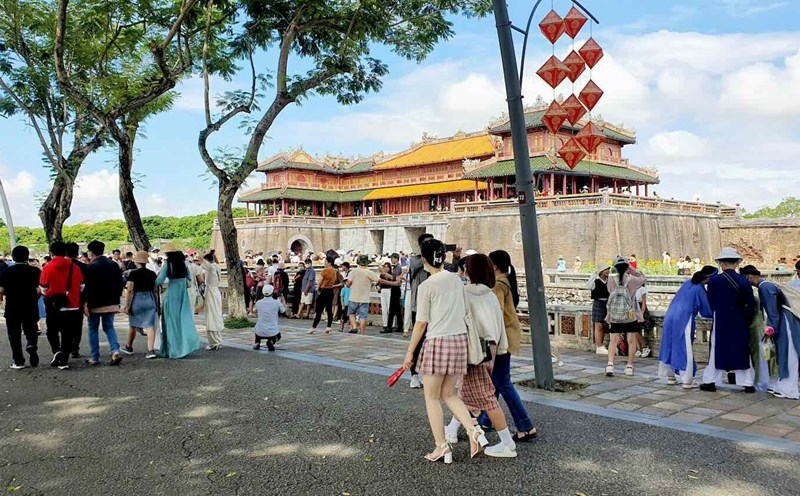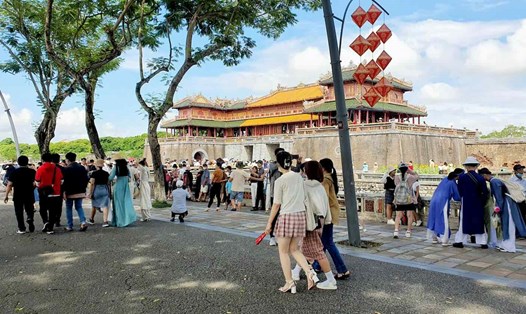Heaven, Non, Water by King Ham Nghi
The painting exhibition "Heaven, Non, Water/Allusive Panorama" by King Ham Nghi, taking place from March 25 at Kien Trung Palace, Hue Imperial City, attracted great attention at home and abroad. More than 20 original oil paintings created by King Ham Nghi during his exiled period in France and Algerie have been repatriated and displayed here. King Ham Nghi is not only a national hero but also one of the first two Vietnamese painters to approach Western academic painting.
His landscape paintings express the nostalgia for his homeland and desire for freedom. This event brought a magical intersection between heritage and art at the place associated with King Ham Nghi.
Kien Trung Palace is not only designed according to the international museum display standards to protect the paintings, but at Hue Festival 2023, for the first time in nearly 25 years of festival history, Kien Trung Palace was chosen as a stage for two nights of opening, closing and Trinh Cong Son music night, instead of traditional stage in Ky Dai - Ngo Mon. This bold decision makes a strong impression: visitors not only admire the project that has just been restored but also lives in the atmosphere of Hue art. The stage light highlights each wall, rafters, decorative patterns, evoking as "the relics are stirring" after many years of being forgotten.
The shows at Kien Trung Palace received many compliments from experts and the public, because they showed that heritage not only "shelved" but also "roofed" and received the breath of the contemporary era.
This is the criterion set by the Hue Festival organizers: "Conserving or restoring a heritage without doing anything is ultimately just a dead heritage." Now, Kien Trung Palace has become a typical symbol of how the relic is revived and its value is promoted in the modern flow.
Hue Festival opens heritage door for integration and development
Since the first Hue Festival opened in 2000, the culture - heritage of the Ancient Capital has entered a new chapter: Monuments are no longer quiet spaces, only for sightseeing, but become a stage and a source of inspiration for art programs.
Starting from Ky Dai - Ngo Mon, Dien Tho Palace, Quoc Hoc Beer..., over many seasons, the organizing committee has taken turns bringing historical works to become artistic destinations. Tourists coming to Hue should not only admire the ancient beauty, but also feel the "moderate breath" spreading to the space of the ancient palace.
Over two decades, Hue Festival gradually shifted from the model every two years to the "four seasons of the Festival" taking place all year round. The Organizing Committee wants to disperse the event so that visitors have a lot of time options, and take advantage of a variety of relics space for performances. When the monument becomes a "stage," the building itself - whether it is the palace, the temple or the Huong River - is also refreshed, becomes more sparkling. That is the way to blow into the relics of a contemporary life, which helps them not to be simply colorful.
Looking back on more than 20 years of development, Hue Festival has fulfilled its mission of " bringing new vitality" to heritage. Since the early seasons, the organizing committee has proactively brought contemporary art programs, international folk music, and street carnivals to the space of the Ancient Capital. This is a clear demonstration of the idea of "cultural heritage with integration and development," helping Hue both preserve traditional values and absorb the quintessence of world culture.
International experience shows that the best way to preserve heritage is to "breathe" the vitality of the times, helping heritage not to be silent. UNESCO has praised Hue for its efforts in preserving and restoring royal and mausoleum works, as well as training a team of highly skilled restorers, ready to pass on knowledge to the next generation.
In September 2023, Ms. Audi Azoulay - General Director of UNESCO, when coming to Hue, commented that the city's heritage had overcome the "urgent salvation" period after the devastation of war, entering a period of stability and sustainable development. She was especially impressed with the way the relic "lives" in cultural activities, maximizing its value instead of just lying idle, becoming a "dead" heritage.






